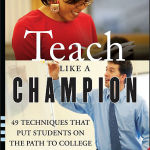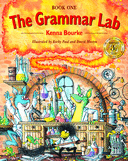curriculum EFL kids language courses Language learning online resources reviews school management self-study smart.fm technology vocabulary
by sendaiben
10 comments
The Word Engine
I think Koichi at Tofugu sums it up much better than I could, but I was very disappointed to hear the news that smart.fm closed down at the end of March (in order to renege on their pledge to remain a free site).
We’ve now moved all our students onto The Word Engine, an alternative paid site with a lot of nifty features. They have a reasonable sub-2000 yen price point for yearly subscriptions.
What sold it for me was the solid research foundation, the pre-test (V-check) that allows students to skip words they already know, and the teacher management system (V-admin) that makes it easy to keep track of large numbers of students and see how (and how much!) they are doing.
The Word Engine is an online SRS (spaced repetition system) that approaches vocabulary learning based on time boxes.
Signing up for an account is painless and takes less than a minute. Users then take a V-check test, which determines roughly how many words they already know. This is very important, as it allows students to skip items they likely know already and start right away on meaningful practice (this was a big problem with smart.fm, as it forced students to either guess at their level or start from the beginning). Payment is also easy, either online or by ordering access cards directly from Lexxica. Teachers can track their students via a free V-admin account, that shows student progress alongside the total amount of time they have spent studying online. It’s a great tool, as it allows teachers to sort by different variables.
After a few weeks, I really like the system. By far the best part is that practice is pretty much effortless. There is no penalty for getting items wrong, unlike in smart.fm, where students occasionally got really frustrated at being unable to ‘clear’ items. In the Word Engine, there is no downside for getting items wrong: they are just quietly moved back into the first box. Practice is also quick, with each session taking only a couple of minutes at the most.
While I would like to see more visuals and example sentences (things I thought smart.fm did well), these are minor issues.
So far we have over 50 elementary (higher grades), junior high, senior high, university, and adult students on the system. Feedback from the students so far is pretty good and most students are keeping to their 30 minutes a week targets (our best student has completed 22 hours of study in just over a month, and the worst just under 10 minutes, but most students are around the 2-3 hour mark).
If anyone else is using the Word Engine, I’d be really interested to hear how you are finding it.
Amazon.com curriculum EFL eikaiwa ES expectations JHS kids reviews teaching The Book Depository theory university
by sendaiben
5 comments
Teach Like a Champion in Japan
Teach Like a Champion is a recent book by Doug Lemov. Despite the cheesy title, I found it interesting, inspiring, and useful, and heartily recommend it to any teacher facing classes (the techniques are probably less useful for teaching one on one).
The book was written from a US K-12 (kindergarten to twelfth grade) perspective, so is a perfect fit for teachers working in elementary or junior high schools. Not all of the techniques are suitable for high school or university students, but a lot of them are, particularly in Japan, so even teachers working at those levels should consider it.
Teach Like a Champion is based on a philosophy of efficiency (what works best for the most students in the least amount of time). It’s a mindset that I admire and have been trying to apply to my classes here for quite some time now. One of my favourite parts of the book is where Lemov talks about the opportunity cost of activities:
“(reading) is a high-quality activity (when done efficiently) that can be carried out in any classroom, at any time, and with limited additional preparation or expense required. You can always invest any stretch of time, short or long, in meaningful reading and reap a strong and predictable retun. Furthermore, if you know you could always be doing meaningful reading -in any class, at any time -you can examine your other investments of time critically: do they exceed the value of meaningful reading? Are they potentially higher return but riskier and therefore should be balanced with something more reliable? As you ask these questions, you may well find that reading crowds out some of the other ways you invest your time.”
This mindset permeates the book, and makes it very persuasive. The idea of the opportunity cost of classroom activities is a simple one that I had never really thought about specifically. On reflection, my benchmark activity teaching English in Japan is extensive reading. Now, for me to do something else in class requires that it be more profitable than ER. Using this idea makes a huge difference to lesson planning.
I really like how Lemov brings a critical eye to classroom practice, making the overall tone of the book one of experimentation. The bulk of the book, however, is taken up by 49 very specific teaching techniques. Lemov claims that after observing hundreds of masterful teachers, he found that many of them were using the same strategies and activities, which he describes in Teach Like a Champion. There is also an online supplement with videos of the teachers in question using the techniques. In my opinion it is worth buying the book just to get access to this resource.
Teach Like a Champion is not perfect. It can feel a little cultish at times (all the techniques have names, which Lemov explains as being necessary in order to clearly convey what he is talking about, but names like “at bat” or “pepper” sometimes feel a bit silly), and the focus is very much on the US K-12 system. However, most of the techniques are universal, and I have successfully implemented them with both small group eikaiwa kids and university classes. All things considered, Teach Like a Champion is one of the best books on teaching I have read (I’ve actually read it twice, and am about to re-read it again to refresh everything), and a couple of friends who have also read it feel the same way.
Unfortunately it doesn’t seem to be available through Amazon.co.jp, so I ended up buying the Kindle version from Amazon.com and reading it on my iPhone, but it’s worth getting a copy sent from the US. For a free postage and packing option, check out The Book Depository.
* Disclaimer: the links in this review are affiliate links. If you click on the links and then buy the product, Amazon or The Book Depository will pay me about 3% of the cover price. This comes out of their profits, it does not make the product more expensive for you than buying it normally. Think of it as a tip to this blog. Of course, if you prefer, you can go straight to their websites and search for the book yourself. I won’t hold it against you 😉
The Grammar Lab, by Kenna Bourke (OUP)
The Grammar Lab, by Kenna Bourke, published by Oxford University Press, is a grammar practice book aimed at children aged 9-12, with interesting content and exercises, appealing characters, and stunning illustrations and presentation.
It consists of three books written completely in English, covering basic grammar points: how to use nouns, verbs, prepositions, etc.
I have been using this series with Japanese junior and senior high school students. The grammar points are not new to them, but the books provide extensive practice and lots of examples of how to use language naturally. The fact that students already understand the content makes it easier for them to deal with the slightly difficult vocabulary and instructions.
I use The Grammar Lab as a homework supplement to regular classes, and find that with approximately 45 sections (37 units and 9 revision sections), one book is good for a year of classes. The production values on this series really are superb, and I really enjoy the illustrations and storylines/jokes. They do a great job of bringing grammar to life and making the drills interesting.
My only complaint with the series is with the Teacher’s Books (I bought the first one), which are only 40 pages long, 30 of which consist of answers to the questions in the Student’s Book, and the other 10 which consist mainly of introductions to the characters featured. This is really not worth 1,400 yen nor does it deserve to be called a teacher’s book. I was expecting a lot more in terms of supplementary activities, ideas for using the text, and advice, and was very disappointed with this.
The Student Books are currently available on Amazon Japan for just over 2,000 yen. This is slightly expensive for a homework/supplementary book, but for keen students who need extra practice at using junior high school grammar in practical ways, they are very helpful, and provide an easy way to incorporate grammar practice/drills into conversation classes.
EFL India Pratham Books readers Reading reviews teaching culture
by sendaiben
leave a comment
Pratham Books (low cost readers from India)

I recently ordered the full range of English language readers from Pratham Books in India to review them for our school. They are an NPO that focuses on literacy in India, and aim to provide low-cost, attractive materials for children. Benefits include very cheap books and the knowledge that by purchasing their materials you are supporting their charitable activities.
SRA Reading Labs
 I recently had the opportunity to try out an SRA Reading Lab for a couple of weeks (thank you, David from McGraw-Hill in Tokyo) and was very impressed with the material.
I recently had the opportunity to try out an SRA Reading Lab for a couple of weeks (thank you, David from McGraw-Hill in Tokyo) and was very impressed with the material.

